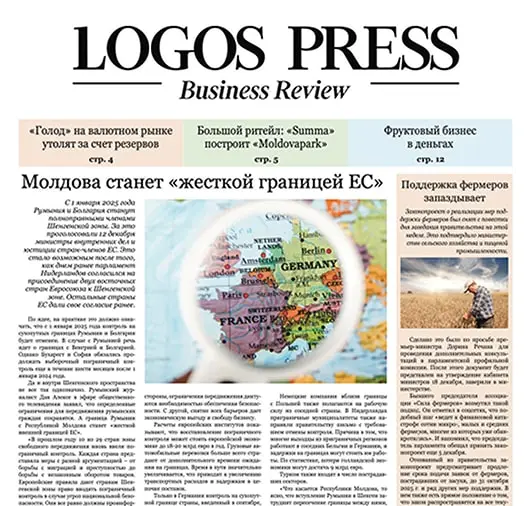Ирина Коваленко
Under the slogan “the whole economy should work for European integration”, the authorities are trying to use all internal and external resources. Mostly credit resources. And in all possible and impossible ways. But they are still catastrophically lacking. The government and the National Bank are now acting remarkably well, stimulating sources of replenishment of funds, trumpeting successes and keeping silent about failures. It is not always possible, of course, to present it under the sauce of “for the benefit of the Moldovan economy”.

A new information system “Register of Inheritance Cases and Wills” has been launched, which will allow notaries to avoid errors in authenticating inheritance cases, Logos Press reported.

The National Army, within the framework of the European Peace Fund (EPF) and on account of European aid, was donated vehicles worth 5 million euros: buses, trucks, minibuses, as well as SUVs and pickup trucks, Logos Press reported.

The National Bank has revised the inflation forecast for the medium term upward, except for the end of 2025. – early 2026, Logos Press reported

The European Commission will provide Ukraine with about €6bn under the G7 credit line, which will be repaid, among other things, from the proceeds of Russian frozen assets, Logos Press reported citing kommersant.ru.

The government’s desire to borrow more from the domestic market is not supported by commercial banks despite a stable supply of yields, Logos Press reported.

With the support of the World Bank Group, finances in Moldova will become widely accessible to the most diverse segments of society, presumably by 2030, when a strategic document on this subject will appear, Logos Press reports.

The situation in the economy forces the National Bank to increasingly use the “safety cushion” of the state to ensure its viability, reports Logos Press.

In October, after a September respite (6.9%), annual inflation returned to an upward trajectory of 7%, Logos Press reported.

Citizens have become more active in lending to the government, having recently bought over 40 million lei worth of government securities through an online platform, Logos Press reported.

The functions of monitoring the quality of state policy in the context of the country’s future accession to the EU will be taken over by the Economic Council under the Prime Minister in a new format, Logos Press reports.

This year’s fall has been fruitful for forecasts of the country’s economic development. Updates followed from both international partners – IMF, WB – and local experts. All of them show cautious optimism about overcoming stagnation. However, they are unanimous that sufficient recovery growth should not be expected.

